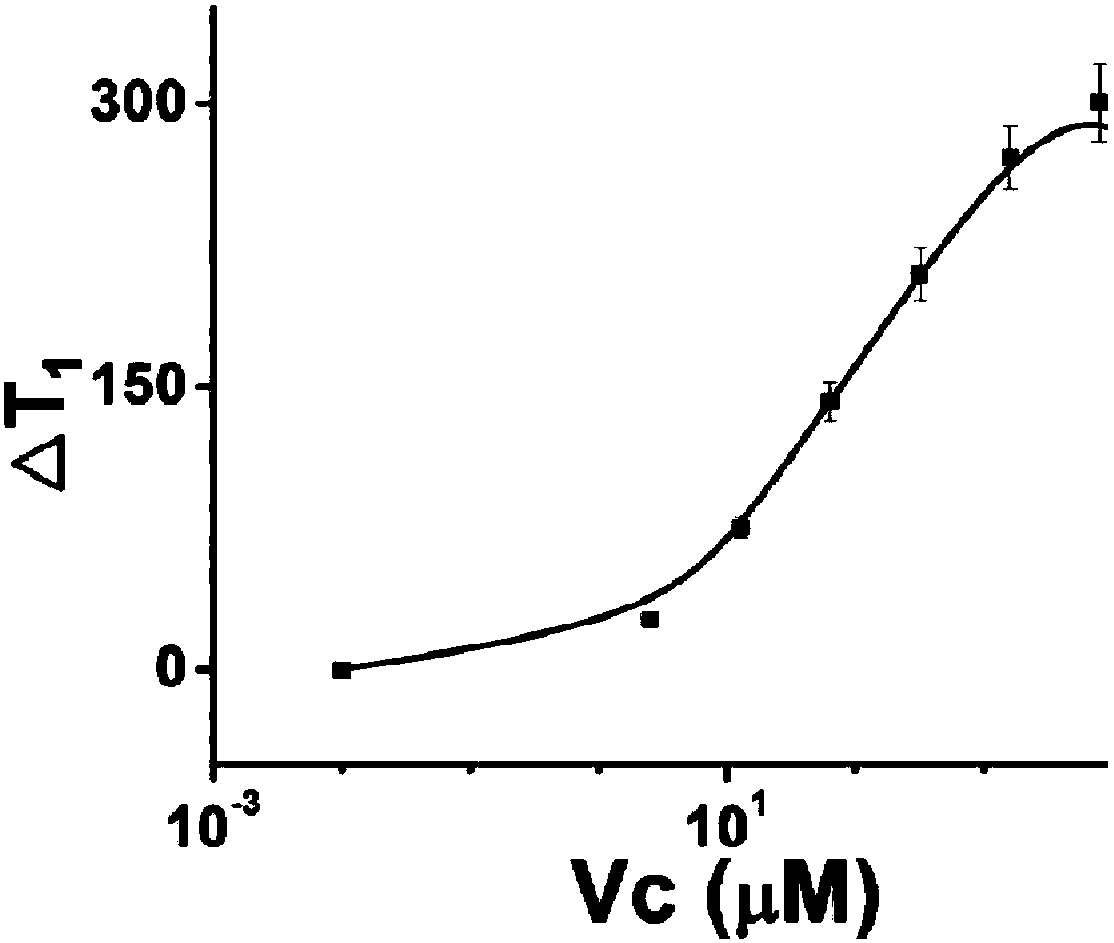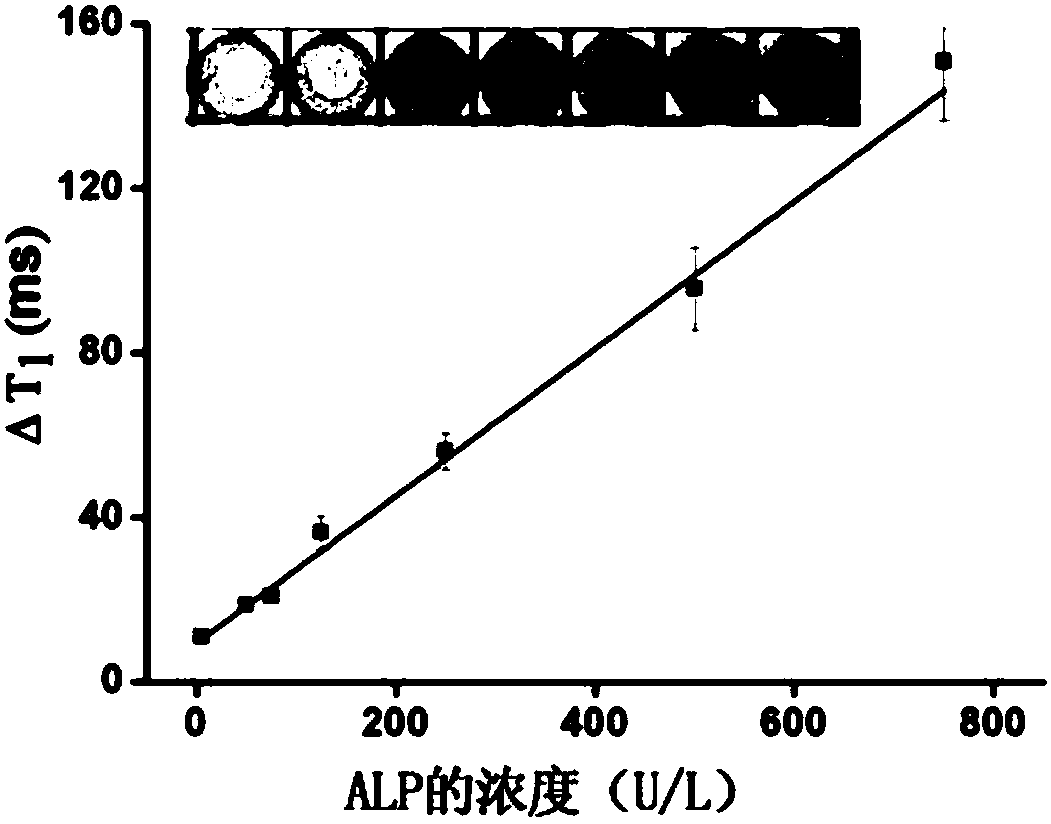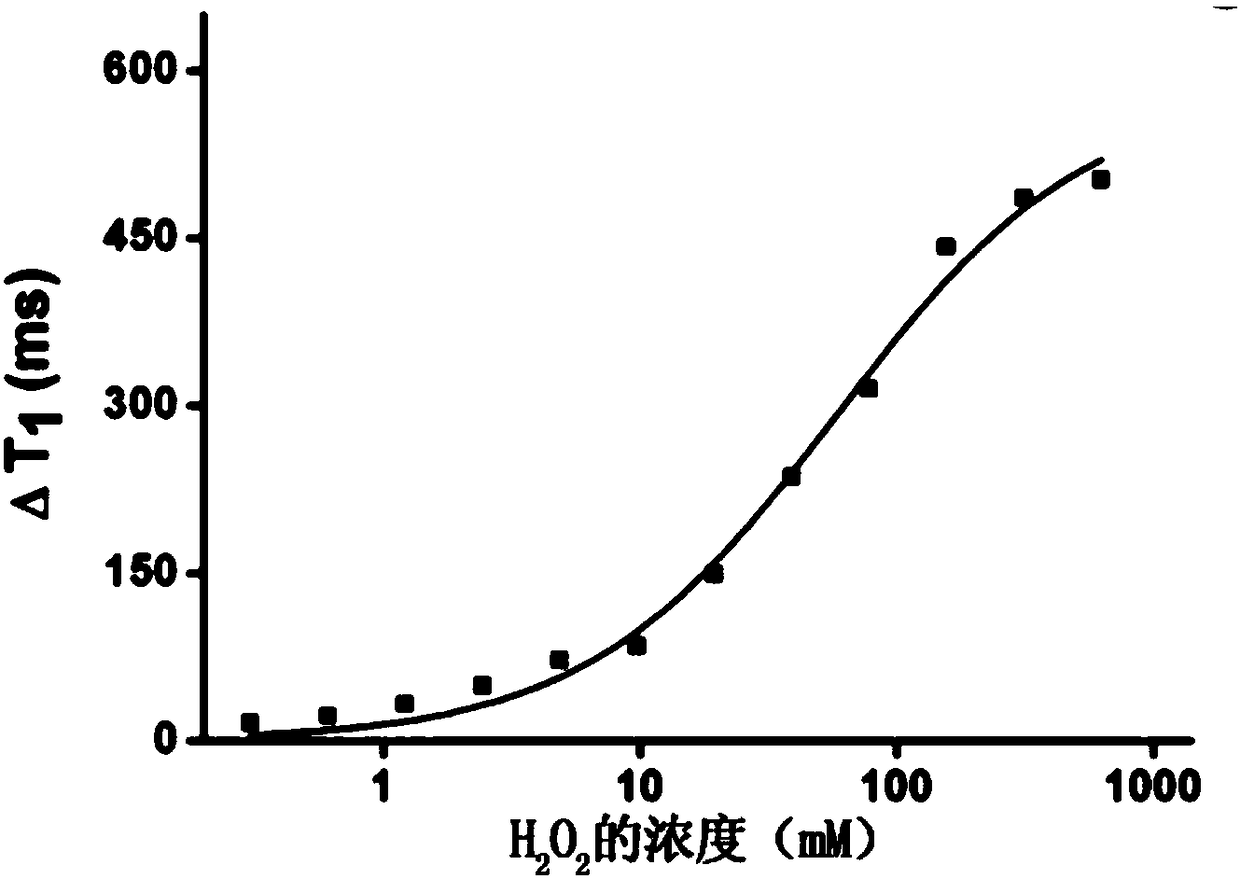Magnetic sensor based on longitudinal relaxation time signal readout, method for constructing same and use of same
A longitudinal relaxation time and magnetic sensor technology, applied in instruments, scientific instruments, measuring magnetic variables, etc., can solve the problems of false positive signals, high cost, and the magnetic relaxation time sensor is not suitable for biochemical analysis, etc., to improve the analysis efficiency , The effect of widening the limit of the detection range
- Summary
- Abstract
- Description
- Claims
- Application Information
AI Technical Summary
Problems solved by technology
Method used
Image
Examples
Embodiment 1
[0046] Alkaline phosphatase (ALP) is an important marker enzyme in immunoassay, and alkaline phosphatase can catalyze its substrate (ascorbate) to produce reductive vitamin C (V C ), the V C The mediated redox reaction can realize the Fe 2+ and Fe 3+ The conversion between the two ions, on the one hand, realizes the detection of ALP, because ALP itself is also an important biomarker. At the same time, it is one of the most widely used immunolabeling enzymes, and the T-based 1 The magnetic sensor of the signal can realize the combination of immunoassay and biochemical analysis.
[0047] In terms of immunoassays, alkaline phosphatase (ALP) can remove a phosphate group from ascorbic acid ester through an enzymatic reaction to become ascorbic acid (V C ), V C Fe can be 3+ become Fe 2+ , thus realizing the T-based 1 Immunoassay of signal, through immunoassay, detection of various targets can be realized.
[0048] T 1 Magnetic sensor detects vitamin C (V C )
[0049] ...
Embodiment 2
[0053] The construction of a magnetic sensor based on longitudinal relaxation time signal readout can detect glucose in blood, and glucose produces hydrogen peroxide (H2O2) under the action of glucose oxidase (GOD). 2 o 2 ), H 2 o 2 Oxidizing, Fe 2+ Convert to Fe 3+ , resulting in T 1 signal changes through T 1 The signal indirectly reflects the content of the target substance (glucose). That is to say, many kinds of biochemical analysis indicators can be detected through this redox. Or use glucose oxidase (GOD) as a marker enzyme in immunoassays to generate H 2 o 2 , H 2 o 2 Through redox reactions, Fe can 3+ / Fe 2+ transition, which in turn causes the magnetic signal T 1 The change of the signal finally converts the content signal of the target substance in the sample to T 1 signal change.
[0054] T 1 Sensors for different concentrations of H 2 o 2 The response result of
[0055] 20 μL of H 2 o 2 The solution was added to a 96-well microwell, and th...
Embodiment 3
[0059] The detection of alpha-fetoprotein (AFP) in serum is realized through immunoassay reaction.
[0060] Experimental steps:
[0061] (1) Dilute the capture antibody that recognizes AFP to 5 μg / mL with coating solution (carbonate buffer, pH 9.6), and add to the wells of the ELISA plate, 100 μL / well. Placed at 37°C, reacted for 2h.
[0062] (2) At room temperature, shake off the solution in the well and pat dry. Add PBS solution containing 0.5‰ (volume) Tween-20, 150 μL / well, let stand for 1 min, shake off the washing solution in the well, and pat dry. Repeat the wash 3 times.
[0063] (3) Blocking: add 100 μL / well of 3% BSA, place at 37° C. for 2 hours.
[0064] (4) At room temperature, shake off the solution in the well and pat dry. Add PBS containing 0.5‰ (volume) Tween-20, 150 μL / well, shake off the washing solution in the well, pat dry, repeat washing 3 times, store at -20°C until use.
[0065] (5) Dilute AFP (1000ng / mL) 2-fold with PBS to 7.8125ng / mL, add 100μL / w...
PUM
 Login to View More
Login to View More Abstract
Description
Claims
Application Information
 Login to View More
Login to View More - Generate Ideas
- Intellectual Property
- Life Sciences
- Materials
- Tech Scout
- Unparalleled Data Quality
- Higher Quality Content
- 60% Fewer Hallucinations
Browse by: Latest US Patents, China's latest patents, Technical Efficacy Thesaurus, Application Domain, Technology Topic, Popular Technical Reports.
© 2025 PatSnap. All rights reserved.Legal|Privacy policy|Modern Slavery Act Transparency Statement|Sitemap|About US| Contact US: help@patsnap.com



